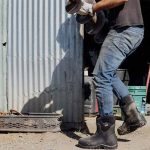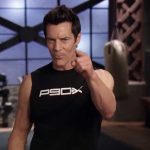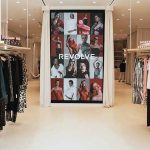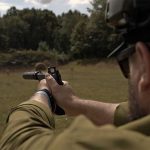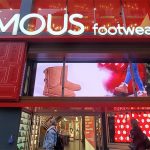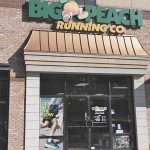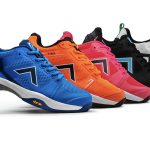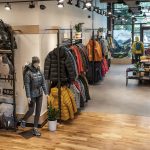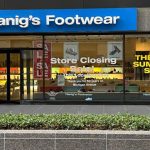Reebok had its first billion dollar sales quarter in six years in the third quarter and has now seen three-and-a-half years of consecutive quarterly sales increases for the Reebok brand in the U.S. market. The underlying strength to the backlog numbers are further supported by a healthier fill-in business in both footwear and licensed apparel that is driving margins higher.
The continued positive progress has the brand talking about raising prices to be in “parity with the industry”, according to Paul Fireman, chairman and CEO of Reebok International, LTD. “Weve been living with a complex”, said Fireman, while going on to say that the company has been under-pricing product for some time because “we really have not considered ourselves capable of charging the prices that are parity to the industry”.
He did acknowledge that the brand has “poorly performed for quite a few years”, but has “made a shift” in the last few years. “Weve been working on it for about three years and its finally come to fruition”, he said.
The move is expected to add margin — and we assume profits — for the company, but is not expected interfere with retail sell-throughs.
Reebok appears to have some license for the move as the full price fill-in business for U.S. footwear increased while the close-out business and returns declined as a percentage of sales versus the year-ago period. As a result, sales exceeded the backlog trend, which we see as a very positive sign for the U.S. footwear business.
The other positive sign was that Reebok brand footwear sales into the athletic specialty, sporting goods and better department store channels increased 46%, increasing the channel to nearly 62% of the brands total U.S. footwear business, versus just 52% at the “same time last year”. Backlog for the channel grew 18% at quarter end. Another good sign.
For Q3, Reeboks basketball business grew 22%, driven by “strong sales of both Iverson and other Rbk products”. Leading the positive product performances was the ATR Swagger II, with “double digit sell-through rates at most retailers”. The Jay-Z Shoes “achieved very strong sell-through rates in many urban markets” in the U.S.
Supporting the companys position further is the stat that sales of “performance footwear products” increased 22% in the U.S. in Q3, driven by a 50% increase in Running and a 29% increase in Mens X-training.
In Running, the Premier Road Lite had sell-through rates at around 20% in running specialty. Reebok said many running specialty stores have been “averaging 12% sell-through on Premier products” throughout the year.
The U.S. Classic business grew 46%, with the Workout, Mid-Strap, Classic Leather Clip and Classic Leather Blaze all producing double-digit sell-through rates in the quarter. , which Reebok still believes that the Classics business can be a billion dollar business by itself, or a third of Reeboks worldwide business.
On the other side of the pond, it was Performance Vector and Rbk, rather than Classics, that drove the sales and backlog increases in footwear.
Sales increased in many European countries on a constant dollar basis, with the company pointing to France, Holland, Poland, Spain, Sweden and the U.K. as the leading markets. The Premier running series is reportedly performing well in Europe, with running shops across the region reporting good sell-through results with the “strongest models being the Premier Road and the Premier Lite”.
The company supported the Performance Vector product with a new TV and print campaign in the Netherlands, Eastern Europe, the U.K., France, Germany, Italy and Sweden in Q3.
CFO Ken Watchmaker said that some of the issues that were hindering sales in the U.K. are now over and Reebok sell-throughs in some of the major accounts in the U.K. during a difficult Back-to-School season were “very, very strong”.
Reebok reported that International sales increased in adventure, fitness and running in constant dollars.
Looking across the Pacific, Reebok is positioning itself for big upside in the worlds largest consumer market, China. As part of the companys strategy, Reebok announced Thursday that they had signed Yao Ming, the 7'5″ native of Shanghai, to a “multi-year partnership”. Reebok said that last year approximately 216 million people played basketball in China and approximately 280 million households watched televised NBA games. No wonder Reebok — along with the NBA — has prioritized the country as a “significant growth opportunity”.
Reebok has put together a new management team to “focus entirely on the Chinese market”, which they see as one largest growth opportunities for the company over the next five years. The structure in China is expected to be a “little different” from the other distributor relationships around the world where the company relinquishes the brand marketing and execution. Reebok will form a partnership with a supply chain group to “execute the actual placement of product at retail”.
Reebok expects to benefit from Yao Mings relationships with the primary television markets, and “joining in those relationships” where possible. Reebok also sees executing an Internet program in China. The company also pointed to Mings relationship with the 2008 Olympic Games in Beijing as a major marketing opportunity.
The company feels that the market in China for athletic goods is in the $500 million range while estimating that they have a mid to high single-digit market share in the country. Watchmaker cited data that indicate that the market will increase to $1.5 billion by the time the Olympics occur in 2008 and Reebok expects to be a “20% player” in the market.
With the company doing $20 million to $25 million at wholesale in the market now, a jump to $300 million in the next five years is very aggressive. The overall Asian business is “less than $200 million at wholesale”.
The company is also looking for greater things in Japan with a new management team in place.
When Fireman was asked how much Reebok was paying Yao Ming under the new deal, the chairman of the company drew laughter when he quipped “More than I am being paid”.
As we reported here in SEW_0337, Reebok has re-organized its apparel business under the leadership of Dave Baxter, who has been driving the On-Field Licensed Apparel business. The company expects to see better leverage for its branded business to help position it for the time when licensed apparel invariably softens as a fashion statement and branded apparel hopefully comes back into favor.
The only place the Reebok brand saw a negative number for the quarter was in the backlog for apparel. The issue again was Branded which saw a double-digit decline in futures that more than offset the double-digit gains in Licensed. The Licensed Apparel business is now “approximately a 60% futures business” this year, from a 30% futures business only two years ago.
This is in sharp contrast to the numbers at Nike, when they explained in their last quarterly report that the licensed business was much more of a fill-in business. Then again, Nikes licensed business is more mature and focused predominantly on college. Reebok said sales of both the fill-in business and quick response “chase business” continue to increase in dollars, but declined as a percentage of the total business.
Licensed is now about 40% of the total apparel business that includes branded and owned-retail as well. The company said that NFL and NBA replica jerseys now represent “approximately 40%” of the licensed apparel business, indicating broader product penetration in headwear and the newer outerwear programs.
Watchmaker said that Reebok has “raised the profitability to the leagues” and is now in the process of increasing its own profitability of the product that is in line the companys overall operating margins.
The company did say that the U.S. Branded Apparel business produced sales increases in Q3, but the gains were due to “higher close-out sales”, which were pegged at around $17 million. Cancellations were $16 million. “We were taking cancels we were closing out the product and getting out of it”, said Watchmaker.
OTHER METRICS:
- Total Reebok brand backlog increased in the U.K., France, Holland, Spain and Pan European accounts. Declined in Germany and Italy.
- The stronger Euro and the Pound Sterling impacted GM 100 BPS to the positive. U.S. branded apparel business impact over -40 BPS.
- Gross Margins comparisons are expected to improve 50 to 60 BPS in Q4.
- Global advertising expenditures for the Reebok brand increased 45% in the quarter.
- Outlet retail comps were up 1.6% for the quarter
Retail comps were down 6.5% in July, up in Aug and Sept. October retail comps trending up.

